FOCUS: Visit Sullivan’s Island Aug. 4 to celebrate National Lighthouse Day
COMMENTARY, Brack: Markers needed to remember victims of S.C. lynchings
IN THE SPOTLIGHT: Morris Financial Concepts, Inc.
GOOD NEWS: Literary festival lasts through Saturday, more
WHAT WE LOVE: Just about everything!
FEEDBACK: Whipper is a gift to us
MYSTERY PHOTO: This one should be easy
S.C. ENCYCLOPEDIA: Lynching in South Carolina
CALENDAR, July 30+: Tax-free weekend is just days away
FOCUSFOCUS: Visit Sullivan’s Island Aug. 4 to celebrate National Lighthouse Day
Staff reports | You can celebrate National Lighthouse Day on the grounds of the U,S, Coast Guard Historic District from noon to 4 p.m. on Aug. 4.
“We hope that people from the local communities and those from afar will come out and explore the grounds of the U.S. Coast Guard Historic District and learn about Charleston Light,” said Chief of Interpretation Paula Ogden-Muse.
Visitors may view exhibits in the historic life-saving station boathouse, according to a press release from the National Park Service. Activities for children include boat building and a special junior ranger activity to earn a badge. Additional exhibits will focus on water safety and lighthouse preservation. Partner organizations that will be in attendance include: U.S. Coast Guard Sector Charleston, U.S. Coast Guard Auxiliary, Sullivan’s Island Fire and Rescue, and the Morris Island Lighthouse Save the Light organization.
On. Aug. 7, 1789, Congress passed an act to establish and support of lighthouses, beacons, buoys and public piers. In honor of the 200th Anniversary of the establishment of the first federal lighthouse, Congress designated Aug. 7, 1989, as National Lighthouse Day. This recognition has encouraged communities and citizen groups to dedicate themselves to the preservation of these historic structures. As part of the anniversary, lighthouses, where feasible, were open to the public.
The Coast Guard’s Historic District represents the evolution of events important in United States maritime history from 1895 to 1962, the release said. Commissioned on June 15, 1962, as the last major lighthouse to be built in the United States, Charleston Light replaced the original Charleston harbor light (also known as the Morris Island Lighthouse) which was built in 1876. The unique triangular shape, interior elevator and aluminum siding distinguish it from more traditional lighthouses.
The free special public event with family-friendly activities will take place at 1815 I’On Avenue on Sullivan’s Island.
- For more information on park news, events and programs, follow us on Facebook http://www.facebook.com/FtMoultrieNPS. Visit the park websites at http://www.nps.gov/fosu, or call 843-883-3123.
- Have a comment? Send to: editor@charlestoncurrents.com
BRACK: Markers needed to remember victims of S.C. lynchings
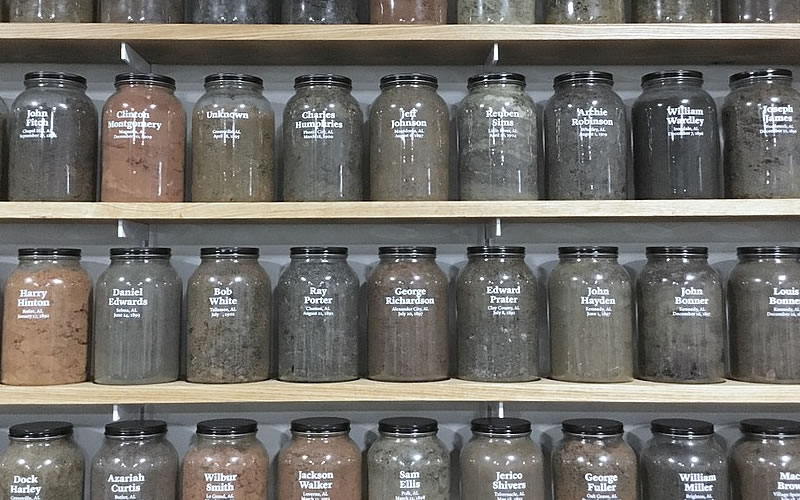
Part of the Equal Justice Initiative memorial to people who were lynched in Alabama because of their color. An Alabama museum tells the story of injustice and terror endured by people of color during long struggle from slavery until today. Photo by Bill Sutton (Lynched in Alabama eji, Montgomery) [CC BY 2.0] via Wikimedia Commons
 Mine was called the “Liar’s Tour.” The dozen people in the group were told that everything they heard on the tour was true – except for one thing. Their job was to figure out the lie.
Mine was called the “Liar’s Tour.” The dozen people in the group were told that everything they heard on the tour was true – except for one thing. Their job was to figure out the lie.
So they heard about the Big Brick, a high-end brothel on Fulton Street that now is a fancy restaurant. They learned about the fire that destroyed a Catholic cathedral in 1861, an inn that was home to a signer of the Declaration of Independence, the Four Corners of Law and the nation’s oldest theater.
They walked by a brick-walled graveyard dripping with Spanish moss. “In the back is where the last lynching in Charleston took place back around 1903. That was called the lynching tree.”
No one ever guessed the tall tale was the so-called lynching tree. Instead, they guessed the lie to be about the house of ill repute or an artist’s studio or something else.
This is a sad story because it illustrates how visitors were all too ready to believe a lynching took place in a sacred church cemetery. Their preconceptions about South Carolina made them accept a fake lynching story.
 And that’s one reason why South Carolina – and the American South – needs to confront its history of racially-motivated terror and lynching. If statues to the Confederate dead are going to continue to loom over public properties across the South as a reminder of the Lost Cause and white supremacy, then local governments and organizations need to erect historical markers to give the context of the environment of fear created for generations in the Jim Crow era.
And that’s one reason why South Carolina – and the American South – needs to confront its history of racially-motivated terror and lynching. If statues to the Confederate dead are going to continue to loom over public properties across the South as a reminder of the Lost Cause and white supremacy, then local governments and organizations need to erect historical markers to give the context of the environment of fear created for generations in the Jim Crow era.
“Racial terror lynchings were violent and public acts of torture that traumatized black people throughout the country and were largely tolerated by state and federal officials,” according to the Equal Justice Initiative in Montgomery, Ala. “Lynchings in the American South were not isolated hate crimes committed by rogue vigilantes. Lynching was targeted racial violence at the core of a systematic campaign of terror perpetuated in furtherance of an unjust social order.”
The Equal Justice Initiative (EJI) has done extensive research to tell the story of more than 4,000 documented racial terror lynchings in the South after Reconstruction, from 1877 to 1950. Earlier this year, EJI opened a national memorial and a museum to inform people about the legacy of lynching.
EJI documented at least 185 cases of lynchings across South Carolina. It’s fewer than the number of lynchings recorded in other Deep South states. Nevertheless, South Carolina was a violent place after Reconstruction. By 1890, historian Walter Edgar writes “the state had three times as many murders as did all the New England states combined (with a population four times as large.) The white minority, not the black majority, was responsible for the largest share of the killings. And as often as not their victims were fellow whites.”
In some South Carolina counties, such as Charleston, Richland and Horry, EJI currently doesn’t have any recorded racial terror lynchings. That doesn’t mean there wasn’t a real lynching tree somewhere in any of those counties. It just means researchers haven’t yet confirmed any racial terror deaths in those places.
“With regards to Charleston, there are many victims who fall outside the parameters of our research due to date of death or number of documenting sources,” said EJI’s Jonathan Kubakundimana. “We primarily included individuals whose murders we could document with two or more primary sources.
“Our work is ongoing and evolving and we are continuing to learn about victims who do fall within our research parameters.”
South Carolina’s last lynching came in 1947 in Pickens County with the death of Willie Earle, charged with the murder of a Greenville cab driver. Gov. Strom Thurmond urged vigorous prosecution of 31 people arrested, but all were acquitted by a jury. Three years later, a young state representative, Fritz Hollings, authored a tough anti-lynching law signed by Thurmond that set the death penalty for lynching. They stopped.
Lynchings are a grisly part of our history. Counties should work with EJI so we never forget what happened.
- Have a comment? Send to: editor@charlestoncurrents.com
SPOTLIGHT: Morris Financial Concepts, Inc.
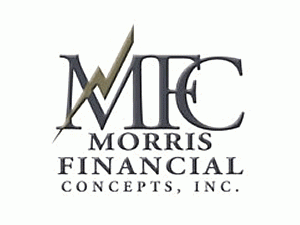 The public spiritedness of our sponsors allows us to bring Charleston Currents to you at no cost to readers. Morris Financial Concepts, Inc., is a nationally recognized, fee-only financial consulting firm that helps you identify and align your resources, values and goals to achieve an enriched life.
The public spiritedness of our sponsors allows us to bring Charleston Currents to you at no cost to readers. Morris Financial Concepts, Inc., is a nationally recognized, fee-only financial consulting firm that helps you identify and align your resources, values and goals to achieve an enriched life.
We do not accept commissions or compensation related to the products and service we recommend. Our counsel is based solely on what we believe is best for each client.
- Learn about founder and Charleston Currentscolumnist Kyra Morris and more about the consultancy at: Morris Financial Concepts, Inc.
GOOD NEWS: Literary festival lasts through Saturday, more
Staff reports | The Charleston County Public Library (CCPL) is celebrating writing this week through Aug. 4 with the Write On! Literacy Festival with talks with authors, workshops and other writing activities.
On July 28, the festival included the first OtrantoCon 2018, a free event for all ages who love anime, comics, science, fiction, fantasy and cosplay, at the Otranto Road Regional Branch.
The Write On! Literacy Festival will feature the following events throughout the week:
- Memoir Writing and Publishing with Cinelle Barnes, Aug. 1.
- African American Women, Literature and Spirituality, Aug. 2.
- Volunteer Fair, Aug. 2.
- An Evening with La Jill Hunt, Aug. 2.
- Outdoor Poetry Reading, Aug. 2.
- Fiction Writing Workshop with Grady Hendrix, Aug. 3.
- Name the Poet Contest
- Featured Event: Write On! Literacy Festival, Aug. 4.
The festival’s primary event will be held at the Main Library, located at 68 Calhoun Street in Charleston, on Aug. 4 and will feature writers and artists including horror story writer Grady Hendrix, poet Richard Garcia, CCPL’s own historian and host of the Charleston Time Machine podcast Dr. Nic Butler, and the keynote speaker and author Nic Stone. Stone was recently named a finalist for the 2018 Amelia Elizabeth Walden Book Award for “Dear Martin.” Also, be sure not to miss USC’s Cocky Reading Express Storytime in the Children’s area!
- For a list of the week’s events, click here.
In other Good News:
![]() New chief. Charleston’s new fire chief, Daniel Curia, will be sworn in 10 a.m. July 31, at Charleston Fire Headquarters in a ceremony attended by Charleston Mayor John Tecklenburg and local officials. The headquarters is at 1451 King Street Extension, Charleston. Welcome, chief!
New chief. Charleston’s new fire chief, Daniel Curia, will be sworn in 10 a.m. July 31, at Charleston Fire Headquarters in a ceremony attended by Charleston Mayor John Tecklenburg and local officials. The headquarters is at 1451 King Street Extension, Charleston. Welcome, chief!
Big gift. The International African American Museum is getting closer and closer its goal of raising millions to build the facility on the Cooper River thanks to a $500,000 gift last week from Fluor Foundation, the philanthropic arm of the Fluor Corporation which has long ties to the state. Following this gift, the museum has just $1 million left to reach its goal, according to the organization.
Pizza and beer. EVO and Holy City Brewing will open a sit-down pizza joint at 94 Stuart St., the old location of DeSanto Pizza Bakery in Charleston’s Eastside. The new operation will include a restaurant, bakery, bar, stage and brewing system to make Belgian beers. The opening is set for early next year.
Data warehouse. State officials and a key lawmaker say it may not be too late to rescue a proposed state data warehouse to collect, store and access data on South Carolina students from kindergarten into their employment years. But for now, privacy concerns have shelved the plan, according to a news story by correspondent Lindsay Street in our sister publication, Statehouse Report.
WHAT WE LOVEWHAT WE LOVE: Just about everything!
Gary Crossley of Charleston sent in a list of what he loves about the Charleston in which he was born. He loves it so much, he tells us, that he even assigned the name Charleston as his son’s middle name.
![]() Gary’s list of reasons for loving Charleston (the city):
Gary’s list of reasons for loving Charleston (the city):
- The city is not too big or not too small.
- The cobblestone streets which had pirates like Blackbeard/Edward Teach and Stede Bonnet roaming back a hundred plus years ago.
- The various waterways, from marshes to creeks, rivers flowing to the ocean, pluff mud to tidal basins, and lakes to ponds, all seemingly interconnected.
- The diversity of food from barbecue to seafood and fresh produce to grits, prepared in so many delicious/tasty ways.
- The music of all types, classical, rap, jazz, Cajun/zydeco, country, Broadway, from local stars like Hootie/Darius and Edwin McCain to Shovels & Ropes.
- The churches of all types dotting the Holy City from the Emanuel AME to the French Huguenot to the Circular Congregation, some with graveyards dating back centuries.
- The trees, like the amazing hundreds-of-years-old Angel Oak with alluring limbs like arms ready to embrace you with beauty and many Charleston drives from the trees reaching across the roads in a canopy like kissing trees.
- The people who are not overbearing but also so willing to help with directions, roadside assistance, restaurant tips, shopping ideas, and maybe just a warm hello greeting.
- The history from many firsts (preserved not rebuilt fake houses, Rainbow Row colors, earthquake rods, and side porches) to Porgy and Bess/Gershwin to having a song/dance named after the city, and world-class festivals like Spoleto Arts to Moja celebration to Flowertown to Second Sundays to Family Circle to the Cooper River Bridge Run.
- The various languages (international visitors and transplanted folks) and dialects (Gullah, Southern, & Geechee) spoken in the area dating back when in the late 1600s people came from around the world to trade their goods and share their artistic talent.
Maybe it is the combination of all these factors which keep us ahead of New Orleans, Savannah, Santa Fe, and others?
Tell us what you love: Send a short comment – 100 words to 150 words – that describes something you really enjoy about the Lowcountry. It can be big or small. It can be a place, a thing or something you see. It might the bakery where you get a morning croissant or a business or government entity doing a good job. We’ll highlight your entry in a coming issue of Charleston Currents. We look forward to hearing from you.
FEEDBACKFEEDBACK: Whipper is a gift to us
To the editor:
![]() Thank you for sharing this inspiring article about Carrie Whipper!
Thank you for sharing this inspiring article about Carrie Whipper!
What a gift to South Carolina and the entire United States. Her story should be told and retold, because it shows the influence of one person with a good idea, caring spirit and winning way.
(Her bright smile shows she has a winning way!)
And thank you for letting us know about one small part of the influential Palmetto Project!
— Carol Ann Smalley, Charleston, S.C.
Send us a letter: We love hearing from readers. Comments are limited to 250 words or less. Please include your name and contact information. Send your letters to: editor@charlestoncurrents.com. | Read our feedback policy.
MYSTERYMYSTERY PHOTO: This one should be pretty easy
There are two reasons we’re offering what should be a pretty easy mystery photo this week. First, the last couple of weeks have been particularly difficult. Second, we’d like to see if we can get the most number of correct guesses for a single photo. If memory serves, that means we’ll have to get at least 14 correct guesses. Send your best guess – plus your name and the town in which you now live – to editor@charlestoncurrents.com. In the subject line, write: “Mystery Photo guess.” (If you don’t include your contact information, we can’t give you credit!)
Last issue’s mystery
 The July 23 extreme close-up mystery photo brought more correct guesses from out-of-towners (though some grew up here) than people who live in the area.
The July 23 extreme close-up mystery photo brought more correct guesses from out-of-towners (though some grew up here) than people who live in the area.
Yes, it was the steeple at St. Philip’s Church at 142 Church St. in Charleston. (St. Michael’s Church, nearby at the Four Corners of Law, is white.)
Congratulations to these great sleuths: Stephen Yetman and Carol Ann Smalley, of Charleston; Elizabeth P. Stevens of Mobile, Ala.; Marnie Huger of Richmond, Va.; George Graf of Palmyra, Va.; Bud Ferillo of Columbia; Paul Hedden of James Island; and Bill Segars of Hartsville.
Graf, as usual, provided more context: “According to discoversouthcarolina.com, Buried in St. Philips graveyard are revolutionaries, politicians, confederates and artists. Among them are Col. William Rhett, known as the “Scourge of the Pirates,” charged with bringing the murderous Blackbeard and Stede Bonnet to justice. Edward Rutledge, a signer of the Declaration of Independence, Charles Pinckney, a signer of the Constitution, and John C. Calhoun, a US senator and vice president of the US also are interred here.”
Send us a mystery: If you have a photo that you believe will stump readers, send it along (but make sure to tell us what it is because it may stump us too!) Send it along to editor@charlestoncurrents.com.
S.C. ENCYCLOPEDIAHISTORY: Lynching in South Carolina
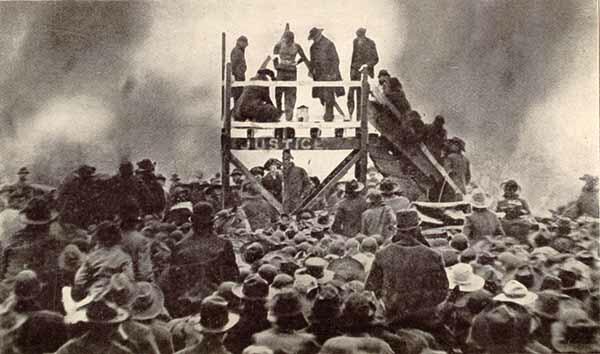
Public domain photo from 1893 of lynching in Paris, Texas, via Wikimedia Commons.
S.C. Encyclopedia | The origin of the word “lynching” has several explanations. The most common account has it derived from Charles Lynch, a justice of the peace in Virginia, who excessively punished Loyalists during the Revolutionary War. Thus, extreme punishment became known as “Lynch Law.”
Another explanation, from the Oxford English Dictionary, suggests that the term derives from Lynches Creek, South Carolina. By 1768, Lynches Creek was known as a meeting site for the Regulators, a group of vigilantes who used violence against their opponents. These early definitions of lynching refer to forms of frontier vigilantism.
After the Civil War and Reconstruction, lynching took on a new, racial connotation and was primarily carried out by whites against African Americans. This racial violence gave white southerners a way to express and reaffirm their white southern identity. It also deterred African Americans from attempting to assert the equality granted to them under the Thirteenth Amendment of the U.S. Constitution.
Lynching became so widespread that the years 1882 to 1930 have been termed the “lynching era.” The National Association for the Advancement of Colored People (NAACP) defined lynching during this period as murder committed extralegally by three or more persons who claim to be serving justice. Between 1882 and 1930 the number of lynching victims in the South totaled 2,805. South Carolina, with 156, had the second-fewest lynching victims. Mississippi, with 538 victims, had the most. [The Equal Justice Institute’s 2017 report on lynching documents 185 reported lynchings in South Carolina.]
The justifications for mob violence had little regional variation across the South as they shared the common intention of disenfranchising blacks. During this era, drawing on scientific racism, white southerners created and articulated an image of African American males as black, beastly rapists whose animal-like sexuality threatened white women’s purity. White men claimed that lynching was a way to protect themselves and, more importantly, their women from black aggression. Racial violence offered white southerners a chance to “redeem” southern society, restoring it to its pre-Reconstruction state. South Carolina governor Benjamin Tillman represented these beliefs about African Americans and southern white male responsibilities. In 1892 Tillman spoke of his own willingness to lead a lynch mob against any black man who had been accused of raping a white woman.
Antilynching advocates, such as Ida B. Wells and Jesse Ames of the Association of Southern Women for the Prevention of Lynching, revealed that contrary to white claims, the majority of lynch victims were not accused of raping white women. In actuality, only nineteen percent of black victims in the South were accused of rape. Victims were lynched for a wide range of behavior, including such illegalities as murder, theft, arson, and assault, as well as for such disrespectful actions as trying to vote, being disruptive, and frightening a white woman.
South Carolina was the site of one of the largest lynchings. On December 28, 1889, in Barnwell County eight African American men were accused of murdering a local merchant. A mob broke them out of jail, tied them to trees, and then shot them. In 1926 Aiken was the site of the Lowman family lynching. A sheriff and his deputies, all members of the Ku Klux Klan, arrived to arrest one of the Lowman sons. Upon hearing that the boy was gone, the sheriff attacked his sister. The resulting scuffle ended with mother Lowman shot by the sheriff, who in turn was killed by a stray bullet. The remaining Lowmans were arrested and tried. When one brother was acquitted, a Klan-led mob stormed the jail, dragged them out, and shot them.
The last lynching in South Carolina occurred on February 17, 1947, when a white mob murdered Willie Earle, a young black man who had been arrested for murdering a white taxicab driver. Although those responsible were acquitted, Earle’s murder marked a turning point for lynching in South Carolina. State and federal law enforcement agents conducted an intensive investigation of the crime that resulted in several arrests and a vigorous prosecution of the accused.
The Earle murder was the culmination of a decline in lynching that occurred during the 1930s and 1940s, which reflected a larger social change. The “Great Migration” of African Americans to northern cities in the 1930s changed labor dynamics in the South. Lynchings, which previously were a form of punishment for interpersonal violence, became a form of social repression, targeted not at criminals but at successful African Americans. By the 1940s the social dynamics that had allowed whites to lynch without fear of repercussions were effectively gone, and so gradually the lynching era came to an end.
— Excerpted from an entry by Kristina Anne DuRocher. To read more about this or 2,000 other entries about South Carolina, check out The South Carolina Encyclopedia, published in 2006 by USC Press. (Information used by permission.)
ON THE CALENDARCALENDAR, July 30+: Sales tax free weekend around the corner
Staff reports | South Carolina’s sales tax holiday is Aug. 3 to Aug. 5 and is a chance for parents to save money as they pick up a bunch of school supplies. But is the state’s sales tax holiday a poor tax policy?
![]() That’s the claim from a new report by the national tax policy think tank Tax Foundation, which calls such state holidays “gimmicks” that “distract policymakers and taxpayers from genuine, permanent tax relief.”
That’s the claim from a new report by the national tax policy think tank Tax Foundation, which calls such state holidays “gimmicks” that “distract policymakers and taxpayers from genuine, permanent tax relief.”
But before you get too excited about buying that new laptop or back-to-school clothes, the report says sales tax holidays fail to promote economic growth, discriminate arbitrarily among products, can mislead consumers about savings, cause costly complexity and instability, and are not an effective means of relief for low-income consumers. South Carolina has the 17th highest sales tax in the nation at 6 percent. Tennessee, which has no income tax, has the highest at 9.46 percent.
Also on the Calendar:
Disconnected: Works by Christine Bush Roman: Now through Aug. 5, City Gallery, 14 Prioleau St., Charleston. The City of Charleston Office of Cultural Affairs will present this show in which the artist combines transfer techniques with painting, drawing and collage to give glimpses into the intricate and contradictory nature of modern life. The works explore postpartum depression, mental illness, and a life out of balance, while examining the web of issues that lead to detachments from one another and the natural world. More: www.charleston-sc.gov/citygallery.
Expressive abstracts: Aug. 2-31, North Charleston City Gallery, 5001 Coliseum Drive, North Charleston. The city’s cultural arts department will welcome a group of works by 35 female abstract expressionist artists who come from across the country. Two thirds of the group will present new mixed media work in the exhibition called “Inside Out: Expressing our Inner Voices.” More info.
Music Under the Oaks: 11 a.m. Aug. 4, Charles Pinckney National Historic Site, 1254 Long Point Road, Mount Pleasant. On June 2, NIA Productions will feature African drumming and dance; On July 4, the show will feature singer Ann Caldwell while the Plantation Singers will perform Aug. 4. Bring sunscreen and insect repellant.
Historic Charleston house tours. 10:30 a.m. to 12:30 p.m., every Tuesday through Aug. 7 at the Nathaniel Russel House, 51 Meeting St., Charleston, and every Thursday through Aug. 9 at the Aiken-Rhett House, 48 Elizabeth St. To learn more about the event and fees, click here.
TEDxCharleston: The annual day of ideas in Charleston is accepting applications through August 27 for participants to speak or perform on issues related to the theme for April 10, 2019: Currents. The theme will explore “What trends are rising to the surface? How are science, art, culture and conversation making waves and evolving to meet the needs of future communities? What changes are happening that parallel and challenge our history?” Learn more |
sign up.
Early morning bird walks at Caw Caw: 8:30 a.m. every Wednesday and Saturday, Caw Caw Interpretive Center, Ravenel. You can learn about habitats and birds, butterflies and other organisms in this two-hour session. Registration not required, but participants are to be 15 and up. $10 per person or free to Gold Pass holders. More: http://www.CharlestonCountyParks.com.
AREA FARMERS MARKETS
SATURDAYS: The Charleston Farmers Market, is back in action from 8 a.m. to 2 p.m. every Saturday through Nov. 24 at Marion Square. A holiday market will be open Dec. 1, 2, 8. 9, 15 and 16.
SATURDAYS: Johns Island Farmers Market operates each Saturday from 9:30 a.m. to 1:30 p.m. year-round with more than 50 local farmers and vendors, food trucks, music and more. The market is located on the campus of Charleston Collegiate School, 2024 Academy Road, Johns Island.
SATURDAYS: The Town Market on James Island are again open. Open 9 a.m. to 1 p.m. every Saturday at the James Island Youth Soccer Club, 871 Fort Johnson Road, James Island.
TUESDAYS: The Town of Mount Pleasant’s Farmers Market is every Tuesday from 3:30 p.m. to 7 p.m. in the market pavilion at Moultrie Middle School, 645 Coleman Blvd, in Mount Pleasant.
WEDNESDAYS. The West Ashley Farmers Market, 55 Sycamore Ave., is open every Wednesday from 3 p.m. to 7 p.m. in Ackerman Park. More.
- If you have an event to list on our calendar, please send it to charlestoncurrents@gmail.com for consideration. The calendar is updated weekly on Mondays.
OUR UNDERWRITERS
Charleston Currents is an underwriter-supported weekly online journal of good news about the Charleston area and Lowcountry of South Carolina.
- Meet our underwriters
- To learn more about how your organization or business can benefit, click here to contact us. Or give us a holler on the phone at: 843.670.3996.
OUR TEAM
Charleston Currents offers insightful community comment and good news on events each week. It cuts through the information clutter to offer the best of what’s happening locally.
- Mailing address: O. Box. 22261 | Charleston, SC 29413
- Phone: 670.3996
Charleston Currents is provided to you weekly by:
- Editor and publisher: Andy Brack, 843.670.3996
- Contributing photographer: Michael Kaynard
- Contributing editor, careers: Ben Fanning
- Contributing editor, common good, Fred Palm
- Contributing editor, money: Kyra Morris
- Contributing editor, Palmetto Poem: Marjory Wentworth
SUBSCRIBE FOR FREE
Subscriptions to Charleston Currents are free.
- Click here to subscribe.
- Unsubscribe. We don’t want to lose you as a reader of Charleston Currents, but if you must unsubscribe, you will have to do it through the email edition you receive. Just go to the bottom of any of your weekly newsletters and click the “unsubscribe” function. If that doesn’t work, please send us an email with the word “unsubscribe” in the subject line.
© 2008-2018, Statehouse Report, LLC. All rights reserved. Charleston Currents is published every Monday by Statehouse Report LLC, PO Box 22261, Charleston, SC 29413.


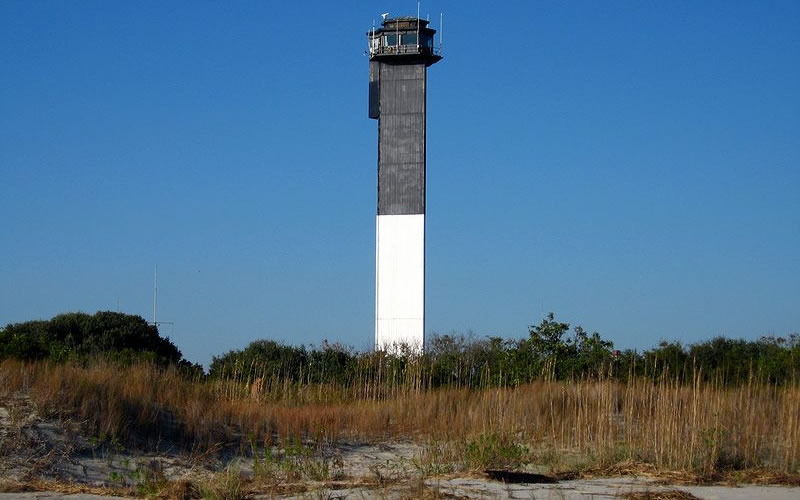

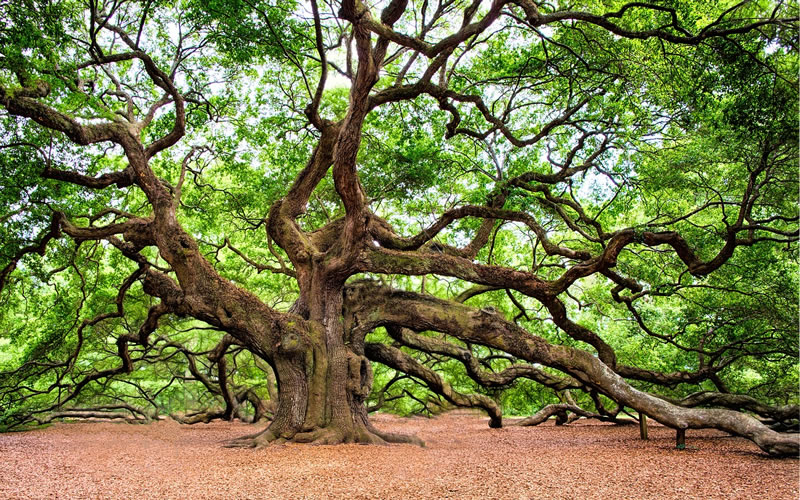
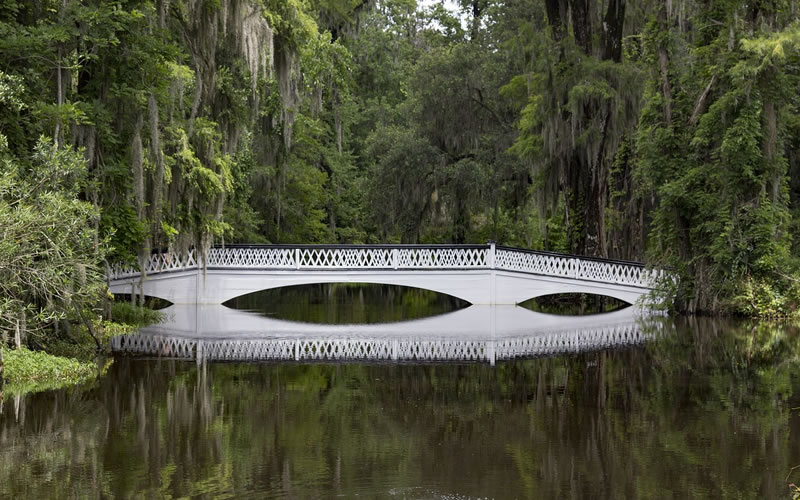

 We Can Do Better, South Carolina!
We Can Do Better, South Carolina!
























